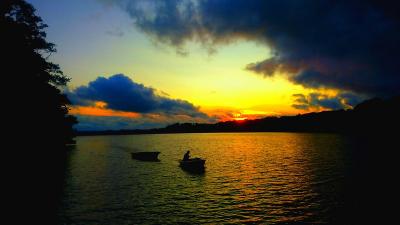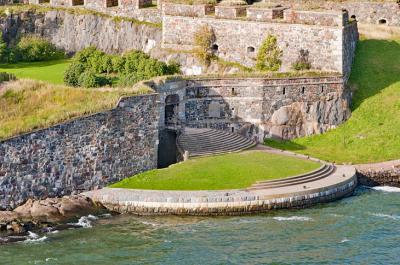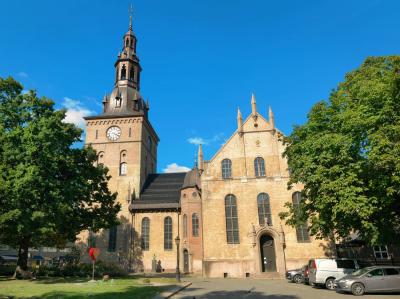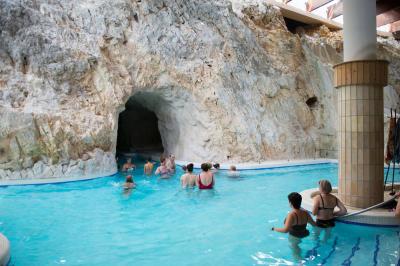Welcome to Mexico
Mexico is a salad bowl of indigenous tribes, Spanish traditions, Mesoamerican cultures and a thriving Latin American economy that rivalled only by Brazil’s. The landscapes are equally varied from Mayan village to azure coastlines and the northern deserts filled with cacti that make it a scenic wonderland. Take a tour of the farms where tequila is produced, climb a volcano, go whale watching, take an underground swim or visit the enormous pyramids and colonial churches that dot the country. In cuisine, there’re options for international and local cuisine from sophisticated foods to popular favourites, nachos and burritos.
The large resorts all provide a plethora of activities from golf and tennis to horseback riding and hunting and watersports like sailing, surfing, scuba diving and deepsea fishing.
A popular sport in large Pacific coastal resorts and Baja California is sport fishing, but freshwater bass fishing is rapidly gaining supporters – especially in the country’s northern dams. On the Caribbean coast, diving and snorkelling are widely popular with the southern reefs and world-renowned dive sites. On the Pacific coast, surfing has grown significantly although the facilities have yet to catch up. Surfboards are available for rent in towns like Acapulco and Mazatlan, but this does not deter Californian surfers who head south for warmer weather during the cold season. Although Baja California and the Oaxaca coast are the most popular with surfers, Lázaro Cárdenas in Michoacán has the largest waves.
Caving in Mexico is also increasing in popularity as most states have caverns due to the limestone on which the country is built. These caves are ideal for spelunkers and potholers alike. Information about licenses and various participatory sports can be obtained from the Ministry of Tourism.
Spectator Sports
Like many countries, Mexicans are fanatical about football. Although Mexican teams haven’t succeeded significantly on the international stage, games are still a sight to see. Guadalajara and the capital city are the best locations for watching a live match while the domestic league’s most anticipated game is the El Clásico, which takes place between Mexico City’s “América” and Guadalajara’s “Chivas” and is watched live by 150,000 people in the Aztec stadium.
Other popular spectator sports include baseball and American football although the latter is mostly watched on television. The local form of Basque handball, which is popular in large cities, is known as jai alai, pelota vasca or frontón. It’s a high-speed ball game on which bets are placed and is played with a small ball that is hard and a curved scoop that players attach to their hands.
In the northern part of the country, charreadas (Mexican rodeos) are a favourite for their costumes and style as much as the event itself. Another crowd favourite is bullfights, and the popularity of them is evidenced by the fact that there is a bullring in every city with Mexico City’s Plaza México being the largest. The toreros of Mexico are in high demand in Spain because they’re said to be the most reckless in the world. Cock fighting is another blood sport that is widely popular although more at village level than the national one.
Finally, lucha libre (masked wrestling) is another extremely popular local sport in which competitors reveal their identities by removing their masks only when they leave competitive wrestling. In many ways, these masked men are like comic book heroes who take their masked bravado beyond the ring and regularly assist the poor from corrupt politicians and unsympathetic landlords.
Travelling with Children
Minors younger than 18 years of age need written content from any parent (or parents) who do not travel with them, but they can enter Mexico on a passport in their own name or as an addition to a parent’s passport.
Many people travel to Mexico with small children. The parents must be ensure that their children are sufficiently protected from the sun and heat. Also drinking water may not be safe for consumption and food with which they’re not familiar – particularly Chile peppers. It’s also a good idea for them to get a rabies shot before your trip as well as to pack rehydration salts in case of travellers’ diarrhea, which can be extremely dangerous for young children. Aside from this, Mexico is a good place for children who are adored by the local people.
Consider a child-carrier backpack if you’re planning to do a lot of hiking, walking or touring; some of these can be less than 2kg in weight. A fold-up buggy may also be worth the hassle of transporting if your child is small enough and can sleep in it while you enjoy your meals.
Among other things, Mexico is renowned for its tradition of craftwork, which was already well-established prior to their colonialisation by the Spanish and remains strong. Villages are especially protective of their reputations for their specialized regional products – particularly in the states of Chiapas, Michoacán, Oaxaca, and the Yucatán. Guatemalan embroidery and textiles are also easy to find.
Crafts
Mexico City and all of the large resorts in the country have craft shops in which they sell the country’s best items and tourist favourites, so it’s not necessary to travel to each of the regions to buy the crafts you may want. Of course, you’re more likely to get better deals from the villagers themselves with the added enjoyment of seeing where the items are created. Be aware that, as with anything anywhere in the world, there are many low-quality commercialized products that are made cheaply for tourists while the items of real quality will be more expensive regardless of where you buy them.
A government agency was created solely for the preservation and promotion of local craftwork. This agency runs a number of FONART shops through the country’s major centres and stock high-quality, albeit pricey, items. The shops are great for top-quality items or just getting an idea of available items before you head to the villages.
Silver, pottery, woolen goods, leather, glass and hammocks are the popular items for buying in the country. Go to Taxco for the best wrought silver. Pottery and woolen goods, especially blankets, are made everywhere although the design, patterns and techniques will differ from region to region. However, if you’re after a sarape, Oaxaca is the best place to go; make sure you check the fibres on the sarape before buying it and it’s advisable to choose the natural dyes although they are more expensive. Leather items – particularly the huaraches (sandals) soled with the tread of tyres – are cheap and available everywhere in the country, but glass products should be bought from Jalisco and lacquerware from Uruapán. Finally, no trip to Mexico is complete without a hammock and the best are found in Mérida.
Mexico is not the place to buy antiques as many of them are cheap imitations that have no value. Moreover, the purchasing and sale of such antiques is illegal while trying to leave the country with them is a criminal offense. Rather appreciate the craftwork on the spot and then move on with your travels.
Markets
The Mercado (market) is the place to go if you’re looking for a bargain. You’ll easily find one in every town across the country and villages will flock to sell or barter their products on the traditional market day, which will also be the market’s busiest day. Although food and daily items make up the bulk of the items for sale at mercados, many markets include crafts sections; in larger towns and cities, you can even find separate crafts markets. There are pros and cons to buying items at markets rather than shops. The greatest advantage to the markets is that you can bargain for a lower price, which is guaranteed to be cheaper than those you’ll find in a store. However, unlike stores, there is no regulation of the quality of items sold at the market so you may find yourself with a cheap item that is as cheap as the price you pay. Another disadvantage of markets is that you will have to figure out how to get your purchases home – unlike stores that offer this service – which may involve a lot of bureaucracy and red tape and could add frustrations to your travels.







